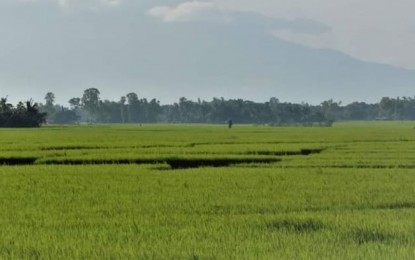
A ricefield in Bago City, Negros Occidental. (PNA Bacolod file photo)
BACOLOD CITY – The Negros Occidental provincial government is gearing up for focused responses to help farmers cope with the effects of the El Niño phenomenon, seen to last until the second quarter of 2024.
The Philippine Atmospheric, Geophysical and Astronomical Services Administration, which issued an El Niño alert in May last year, indicated an expected increase in the likelihood of below-normal rainfall conditions in particular areas of the country, which could have negative impacts, such as dry spells and droughts.
Provincial Administrator Rayfrando Diaz II said the efforts will focus on “productive and already irrigated lands,” which are likely to be less affected, to ensure ample rice supply in the province.
“We have already identified areas where water can be impounded in our rice-producing local government units,” he told reporters on Wednesday.
Diaz said the provincial government has procured 30 sets of water pumps with pipes to distribute water supply to the irrigation system from impounding sites.
Rice farmers under the Federation of Irrigators’ Association of Central Negros-Bago River Irrigation System, mainly from Bago City, La Carlota City, Valladolid, Pulupandan, and San Enrique, will benefit from the assistance.
Bago City alone, considered "the rice bowl of Negros Occidental," yields more than 30 percent of the rice production of the province.
“The El Niño phenomenon is now affecting us. We are ready. I have asked the farmers, they say we can do it. We are prepared and we can meet the challenges of El Niño head on,” Diaz said.
Earlier, the provincial government allotted some PHP15 million in funding for the El Niño response to cover the acquisition of materials and equipment to maximize the management of available surface water.
“(This month), we will be able to have it delivered and distributed to farmers in the pre-identified areas. We are prepared to deploy the soonest time possible,” Diaz said. (PNA)
